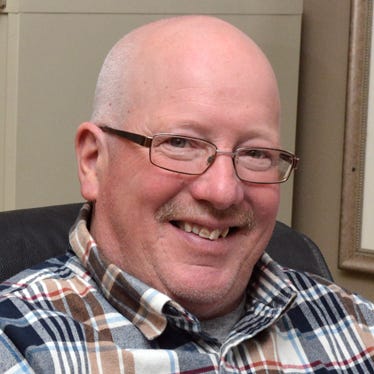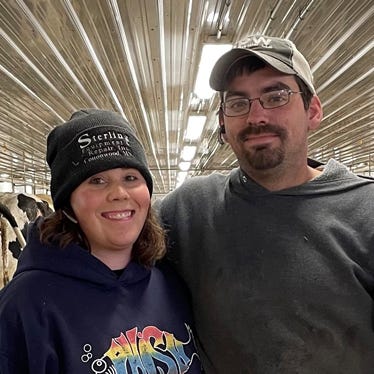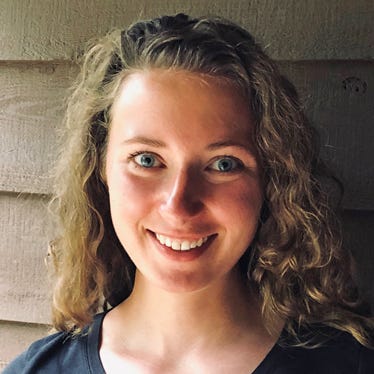
The mid- to late 1980s were tough financial years for all farms across the U.S., yet that was only the acceleration of attrition for the dairy industry. The culling of family farms continued into the 1990s across the country. It was a time when you had to decide — invest and expand or exit.
Dairy farmers in Minnesota were especially challenged with aging stanchion and tiestall milking barns and equipment that impacted animal care, feeding, milk production and milk quality.
In response to concerns about the number of farms across the state exiting the business, dairy industry leaders and University of Minnesota Extension dairy specialists held meetings to talk about how to halt dairy’s demise. One main theme surfaced about providing a new way to directly educate producers about all aspects of farm management including finances, herd health, milk production and dairy nutrition.
Around 1994, Extension and dairy leaders decided to try a program in Carver County that would help dairy farmers get support from their own team of experts — their veterinarian, banker, animal nutritionist, peers — anyone who would agree to meet with them on a regular basis to serve as advisers and offer ideas on overall farm management.
That initial effort was well received, and by 1996, the Minnesota state Legislature agreed to provide $1 million to launch a pilot project — the Dairy Development and Profitability Enhancement Program. Since then, that program has evolved and is now known as Minnesota Dairy Initiative, its own 501(c)(3) nonprofit, which receives annual grant funding through the Minnesota Department of Agriculture.
Over its 25-year history, this customized team approach has supported hundreds of Minnesota dairy farm families as they explored options in business, husbandry and crop management.
In from beginning
One of the early adopters was Steve Hoffman near New Ulm, Minn. He and his wife, Kerry, began working with the Minnesota Dairy Initiative in the late 1990s. At the time, they were milking 45 cows, growing crops and raising two small children.

Steve Hoffman

“A lot of dairy farms were expanding or selling out,” he recalls. “We recognized we needed to grow.” They signed up for the program and had assistance from their MDI coordinator in assembling their expert team — their banker, veterinarian, dairy nutritionist and Farm Business Management instructor. One of the first things they discussed was hiring an employee — something that definitely hadn’t been on Hoffman’s radar. But when the opportunity arose within weeks of that meeting to hire a part-time milker, Hoffman did a 180.
“Man, did that change my outlook on dairy farming,” he says. “It was life-changing to have supper with my family [and not have to do evening milking chores]. That propelled me forward with wanting to continue to improve my farm.”
Since then, the MDI team helped the farm execute several management decisions as it continued to grow to its current herd size of 150 Holstein and Jersey cows. A wastewater issue was resolved after installing a flocculator to process impurities. Their dairy nutritionist helped with locating a heifer grower that takes week-old calves, and returns them as bred heifers a month or two prior to calving.
Facility improvements include a compost bed-pack barn, a remodeled stanchion barn, a double-12 para-bone (hybrid of parallel and herringbone milking parlor styles) pit milking parlor,and a remodeled milking and dry cow barn. With housing updates came a switch to total-mixed-ration feeding, feed storage improvements and a new skid loader.
“Milk production jumped like crazy with the TMR and new facilities,” Hoffman says. “It went up 10 to 12 pounds per cow per day. That was awful nice.”
Milk meters and cow ID were added later to the milking system, along with outfitting cows with monitors that track activity and rumination.
“That was the single best purchase we made,” Hoffman says. “We mainly bought it to track the cow’s reproduction cycle (to aid artificial insemination).” More active cows are likely to be in heat. Inactive cows or less rumination activity could indicate health issues. “The great thing about this is that we monitor everything from an app on our phone or on the computer,” he adds.
As remodeling and building leveled off, Hoffman says they rely on their team — which has grown to include the farm’s herdsman and the Hoffmans’ son, Joe — for management suggestions regarding milk quality, herd health and labor management. Lately, farm transitioning has been a natural fit in their discussions. Meetings take place about twice a year now.
“I think everyone appreciates meeting together like this,” Hoffman says. “It helps each individual see the big picture on our farm. For example, our banker can see why we’ve spent money on specific [animal] testing, and the vet can explain why. Overall, it helps strengthen our team. And in the end, we hope we’ve made some good decisions and avoided bad ones.”
Sticking with success
Kyle and Stephanie Goeller operate a 160-cow dairy farm near Sebeka, Minn. They raise their own dairy replacements and farm 247 acres, growing corn for silage and hay for haylage. The couple also has three young children ages 5 and under. Both grew up on dairy farms. Stephanie grew up on a farm near Lucan and Kyle grew up on a dairy farm just north of Bluffton.

Stephanie and Kyle Goeller

They decided to sign up with MDI in 2010 after they bought a herd of cows and rented a barn from a relative that same year.
“He [our relative] was a part of MDI, and we wanted to continue with the program to help us be as successful and profitable as possible,” Stephanie says.
The Goellers meet with their team — their MDI coordinator, banker and FBM instructor — every three months. Input from team members has been instrumental in helping with financial planning and in securing grants to fund various projects over the years. In 2017, the Goellers bought a farm and made extensive renovations.
“The team helped us make a smooth transition from the rented farm to our current farm,” Stephanie says.
They milk twice a day in a 78-stall tiestall barn. The remainder of the herd is housed in a bedded pack barn. They feed a total mixed ration to cows and breeding-age heifers.
The Goellers have one full-time and four part-time employees. With three small children, Stephanie doesn’t milk cows much these days. Instead, she handles calf feeding, breeding, bookwork, and employee training and scheduling. Kyle’s main duties include overall farm management and maintenance; feeding cows, heifers and dry cows; hauling manure and bedding animal lots; and fieldwork.
Future plans on their farm include installing a cement feed pad for haylage and silage bags, securing Environmental Quality Incentive Program funds for a new manure lagoon pit, adding onto their heifer shed and purchasing more land to add acreage for more crops and manure management.
The MDI program has helped the farm improve its profitability and productivity. The Goellers have seen milk production increase from 65 pounds to 85 pounds of milk per cow per day from when they started. They really appreciate having their own advisory team to discuss options.
“The team helps bring ideas from other operations to our table that helps us make better decisions to keep our dairy profitable,” Stephanie adds. “We really enjoy getting together with our dairy profit team. It’s always nice to get everyone together to discuss how we are doing and how we can get better. It also helps to keep everyone on the same page.
To learn more about the Minnesota Dairy Initiative, call 320-429-0611, email MDI state director Leah Bischof at [email protected] or visit the MDI website, www.mn-dairy-initiative.org.
MDI open for business
The Minnesota Dairy Initiative program is open to any dairy farm operation that is interested in improving management and profitability.
Ten coordinators across the state work with farmers to establish individual farm teams. The coordinator serves as a key resource person and is responsible for setting up the meetings and taking minutes. There is an annual enrollment fee of $200 to participate in the program. Farmers enrolled in MDI also have access to scholarships up to $500 to help further advance their operation.
In fiscal 2020, MDI reached 257 dairy farms. On average, 200 to 300 farms each year enroll in the program. Some farms participate for only one year to help address a specific issue. Others enroll for multiple years when considering expansion, farm transition and employee management. For fiscal year 2021, MDI has 187 dairy farms enrolled as of mid-April.
Along with state funding, the dairy industry provides program support through in-kind contributions by serving on teams. In the recent years, the amount of in-kind contribution has varied from $770,000 to $1 million per year, according to Dave Weinand, Minnesota Department of Agriculture, who administers annual MDI grants.
Leah Bischof, MDI state director, says farmers find a lot of value in having a team approach on their farms. The program has received many positive comments over the years complimenting MDI teams for helping provide expertise, focus and coaching, and with keeping vital lines of communication open with everyone.

Leah Bischof, Minnesota Dairy Initiative state director

Along with their duties of planning and meeting with producers and on-farm teams, MDI coordinators also host peer group meetings and other events statewide. One event held in collaboration with University of Minnesota Extension is “Planning Your Dairy Farm Future.” This four-week class focuses on a dairy farm’s next decade and how it might look.
“By the end of the class, farmers leave with business plans in hand that can help them determine what their future could look like,” Bischof says. Classes are ongoing throughout 2021.
“We strongly encourage dairy producers that have an interest in something like this to reach out to MDI so we can get a class scheduled near them,” she adds.
In addition to this class, MDI also hosts farm couple retreats in collaboration with MDA, Extension and other sponsors.
“This retreat is a 24-hour getaway for dairy farming couples to attend and get resources on family communication, personality assessments, love language, building trust, reducing stress, etc.,” Bischof says. “It’s a very fun time for couples to enjoy some time away from the farm, away from the family and to spend time focused on each other.” The retreats are over for 2021, but Bischof says they are planning them for February.
MDI helps build resiliency
A recent study regarding resilient dairy farms in Minnesota showed that 64% of resilient farms participated in the MDI program.
University of Minnesota Extension specialist Joleen Hadrich and Extension educator Amber Roberts looked at Farm Business Management data from 83 farms, of which 19 were considered resilient, meaning they performed in the top 25% of their peers for a minimum of three years. The resilient farms were smaller in size (110 cows, versus 415), received a higher milk price ($19.45 per hundredweight, versus $18.46 per hundredweight) and reported a 5% lower milk yield than the nonresilient herds.
“When we looked closer at the factors affecting resilient farms, we observed that 64% of the resilient farms participated in MDI, and they ended up keeping their cows in their herd longer,” Hadrich says.
Other financial data from 2019 FINBIN show that MDI’s average impact on a 200-cow herd was a $456 total net return per cow when compared with non-MDI herds of 200 cows.
Bottom line: As economic impact varies from year to year, farms with an MDI team continue to outperform those that don’t have an MDI team.
About the Author(s)
You May Also Like






